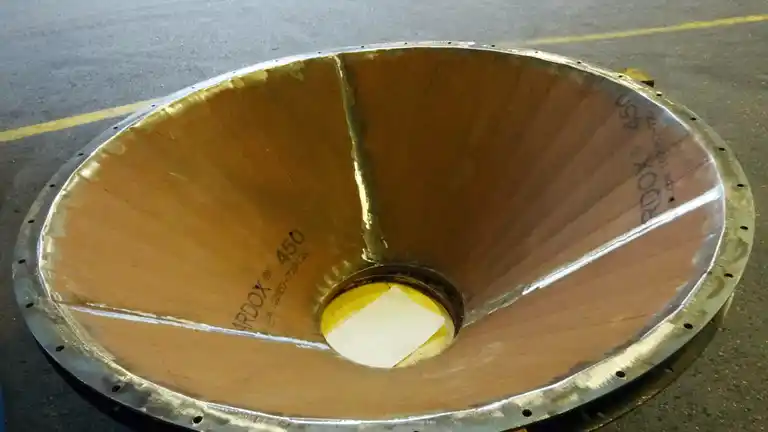Wear Resistant Steel
Steel is an extremely resistant material, relatively light and can be processed quite easily. Unfortunately, like any other material, steel also has its weak points. Steel products can wear out over time due to mechanical stress, force or chemical processes.

Wear and how to reduce it
The way in which you counteract the effects of wear and tear can vary significantly and will largely depend on what triggers the wearing process, which can be counteracted by coating materials, for example. For instance, the body of a pickup truck has a lot to bear. A polyurethane coating prevents early or excessive wear.
In a car engine we use oil lubrication against wear. Steel objects that are exposed to wear where lubrication is not possible can also be provided with a surface of wear-resistant steel plates. In this way the construction can be made of relatively cheap construction steel and only the part exposed to wear is provided with a wear-resistant cover.
Wear
The most common forms of wear and tear
Abrasive wear
This type of wear is caused by the contact between the material and a softer surface. Friction, impact or vibration scrapes particles from the steel surface, resulting a reduction of material thickness. This type of wear mainly affects companies that mine sand, gravel and other bulk materials.
This form of wear can generally be reduced by coating the soft surface or using a material that is harder than the material being processed.
Material Fatigue
Repeated rolling, bumping, oscillating or flowing movements cause weakening or indentations in the surface, which can lead to cracks or fractures.
These cracks and fractures can also lead to pitting corrosion. Resistance to this form of wear can be counteracted by using the correct wear-resistant materials, if possible in combination with the correct lubricant.
What is wear-resistant steel?
To make steel more resistant to wear, it can be hardened by adding alloying elements. Wear resistant steel generally has a higher carbon content and also contains manganese, chromium, nickel, vanadium and boron.
These alloying elements increase not only the hardness but also the ductility. To a limited degree, these elements also have a positive effect on corrosion resistance. In wear-resistant steel grades, however, this is not the main reason for adding these elements.
When producing extremely hard steel grades, other material properties must also be taken into consideration. It is very important to keep in mind that steels become more and more brittle with increasing hardness and this makes them more prone to breaking or cracking. Only the use of the right alloying element combination can prevent this in most cases.
Wear-resistant steel can be bent and machined easily and welding can also be carried out with the correct precautions.
Steels with a higher manganese content harden by cold forming. An example of this can be the cladding of a bunker that is filled with gravel. During production, the wear-resistant surface can still be processed easily (by machine), but is further hardened during use. This effect is called "work hardening".
Examples of wear resistant steel grades
Wear-resistant steel is not specifically standardised as a material, as it is for instance in the case of structural steel. The different steel-mills may therefore use their own "recipe", each with its own advantages and disadvantages and its own brand names. Some of these brand names and associated manufacturers are:
- Hardox®-Verschleißblech (SSAB)
- Creusabro® (Arcelor Mittal)
- Dillidur® (Dillinger)
- Brinar® (Salzgitter)
- Quard® (NLMK).
A large quantity of wear-resistant plate metal is identified by the brand name followed by a number. This number, often 400, 450 or 500, is often used to indicate the hardness in Brinell hardness. The hardness of wear resistant sheet material can be up to HB600.
Usage
Wear-resistant materials are used where the various forms of wear play a major role. Depending on the type of wear, a certain type of material can be used.
If materials are chosen incorrectly, there are various risks:
- Cracks in the material
- Material breakages
- The material wears out much faster and needs to be replaced earlier than expected
Wear-resistant parts are often used in products such as:
- containers, garbage trucks, dump trucks
- gripper arms, excavator buckets, wear blades and plate metals
- document shredders, grinders and sieves
- conveying systems, sieve systems, bunker walls and bunkers
- asphalt plants, recycling plants, concrete plants, mining and coal handling
- walls of storage rooms for abrasive materials such as sand, gravel, etc.
See also
BRINAR
BRINAR is a wear-resistant steel which is used in mechanically highly stressed areas.
Read moreConstruction Steel
Construction steel has excellent mechanical properties and can be processed very well.
Read moreCopper
Copper is used in many ways for industrial and construction purposes. It is also suitable as an alloying element.
Read more